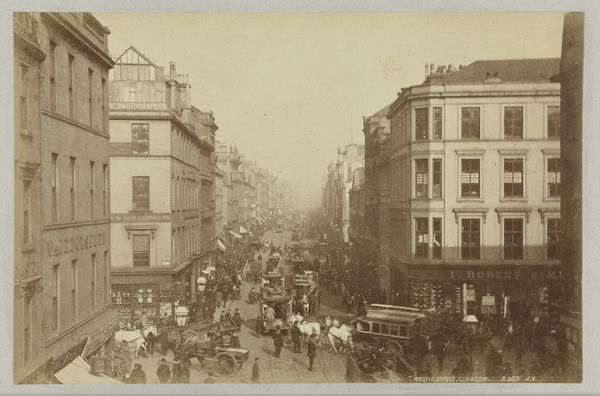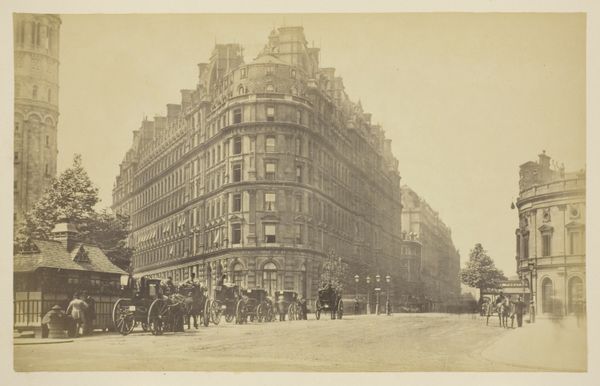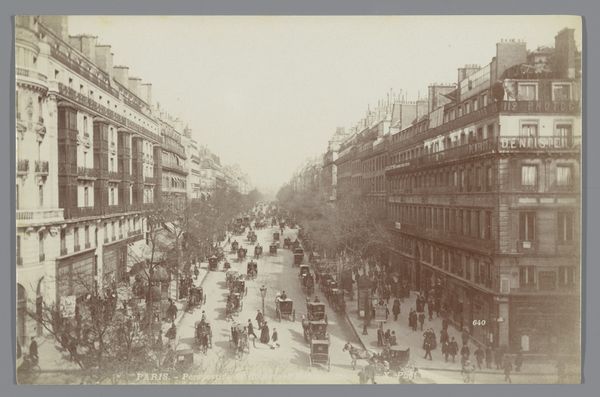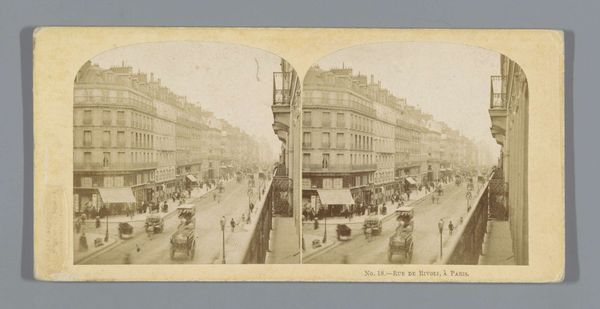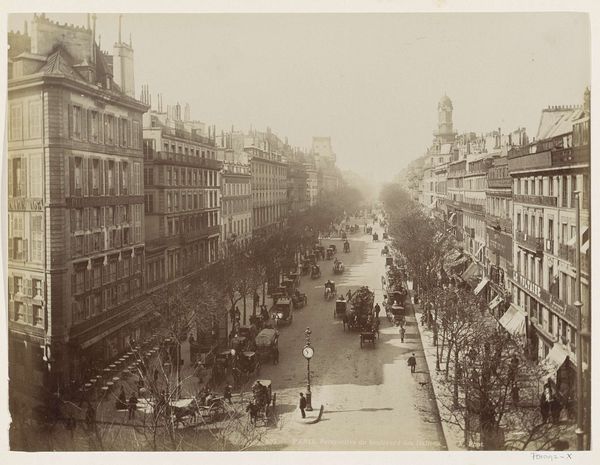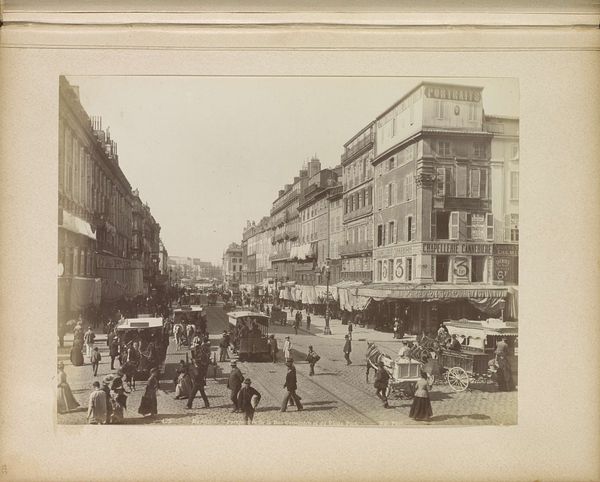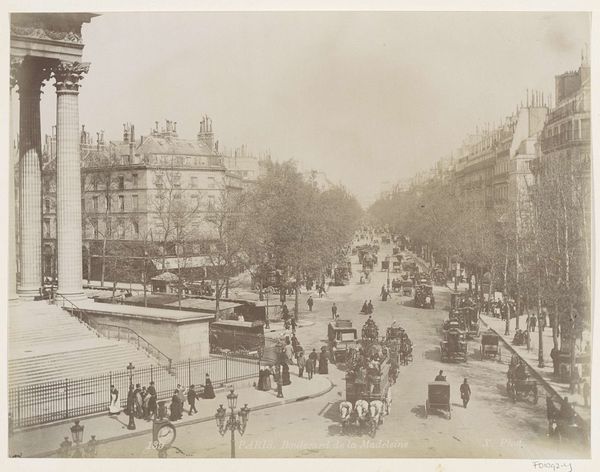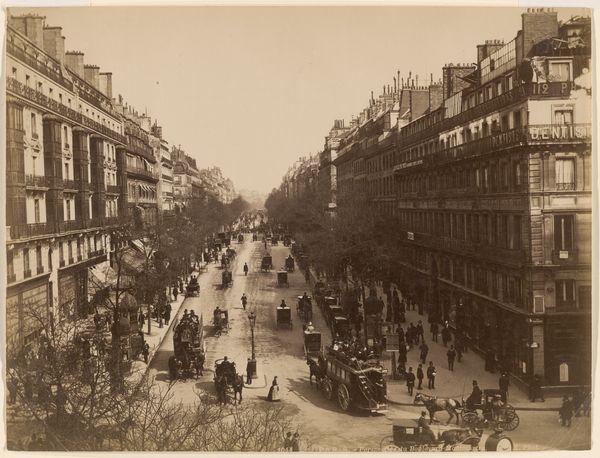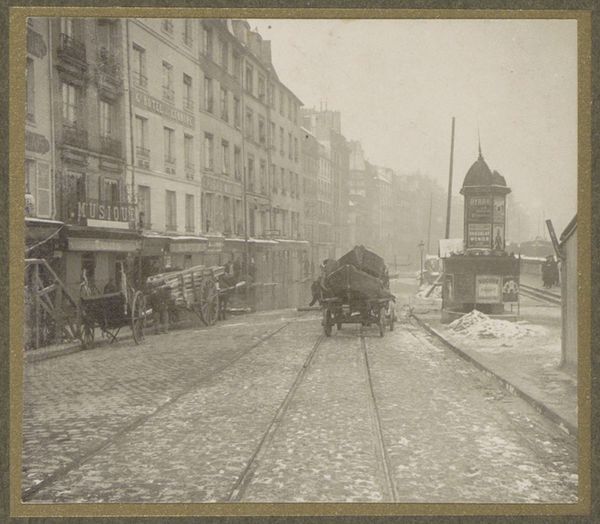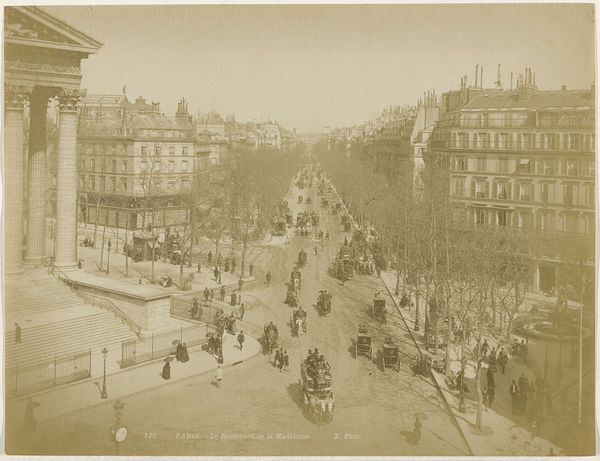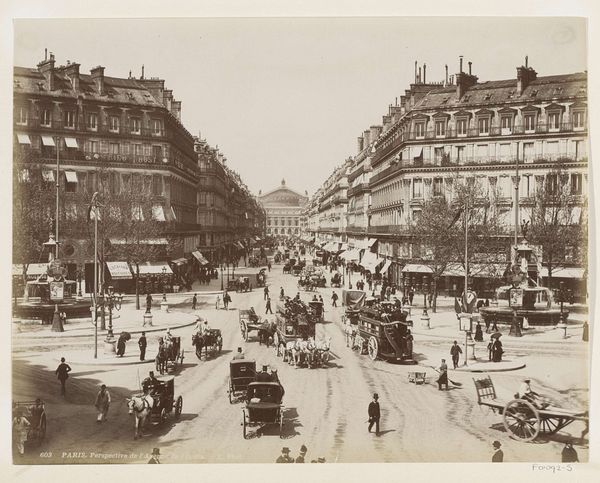
Straatgezicht op een druk kruispunt in Parijs c. 1890 - 1910
0:00
0:00
Dimensions: height 505 mm, width 395 mm, height 400 mm, width 272 mm
Copyright: Rijks Museum: Open Domain
Editor: Here we have George Hendrik Breitner’s "Street Scene at a Busy Intersection in Paris," a photograph from around 1890 to 1910, currently residing in the Rijksmuseum. It’s captivating how he captured such bustling energy in monochrome. What stands out to you in this photograph? Curator: Well, looking at Breitner's photograph, it’s interesting to consider how he, a Dutchman, engaged with the image of the modern Parisian city, especially during this period. How do you think the advent of photography, and its increasing accessibility, might have affected traditional painting's role in depicting cityscapes at the time? Editor: That's a great point! Photography could capture a 'real' moment instantly, which paintings maybe couldn't. Perhaps this pushed painters to experiment with different styles or subjects? Curator: Exactly. It’s important to remember how photography was perceived then - was it seen as art, a scientific tool, or just documentation? The subject matter here also deserves consideration: How does Breitner portray the social strata and movement within the city? Are the people active participants or passive observers of modern life? Editor: I notice the carriages and well-dressed people suggest a certain social class is being highlighted. Maybe the everyday lives of ordinary Parisians weren’t considered as artistically valuable at that time? Curator: It begs the question of representation, doesn't it? Who gets to be seen, and who dictates that visibility? Consider also how the rise of mass media affected public perception and artistic production. Were artists responding to or trying to shape public opinion? Editor: This makes me wonder about the intentions behind capturing scenes like this – was it pure documentation, social commentary, or something else entirely? It's much deeper than just a pretty picture. Curator: Precisely. Examining Breitner’s photograph within the social and technological context really reveals so much about the era and the role of art within it. I see photography as a disruptive technology, which helped redefine artistic and social perspectives. Editor: It’s been enlightening to delve deeper into Breitner’s photograph and its social context. Thank you for sharing your expertise. Curator: My pleasure. Looking at art through different lenses always opens up new avenues of understanding.
Comments
No comments
Be the first to comment and join the conversation on the ultimate creative platform.
